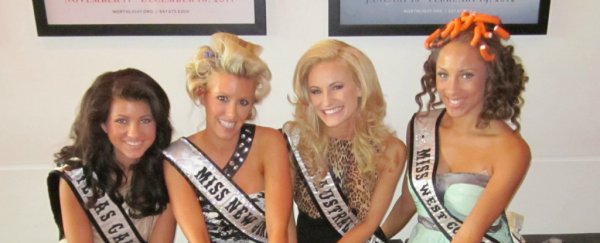We all know the saying 'beauty is in the eye of the beholder', and the fact that there are a whole lot of strange-looking people out there happily loved up would suggest that it's true. But scientists have now performed the biggest test so far, analysing the preferences of more than 35,000 people, and have shown that we really do all have a unique 'type'.
In fact, the study showed that even identical twins - who share nearly 100 percent of their DNA - aren't attracted to the same people, suggesting that it's our experiences, more than our genes, that determine whether we find someone hot or not.
"We estimate that an individual's aesthetic preferences for faces agree about 50 percent, and disagree about 50 percent, with others," lead researchers of the project, Laura Germine from Massachusetts General Hospital and Harvard University, and Jeremy Wilmer of Wellesley College, explain in a press release.
"This fits with the common intuition that on the one hand, fashion models can make a fortune with their good looks, while on the other hand, friends can endlessly debate about who is attractive and who is not," they add.
Of course, there are some things that people seem to find pretty much universally pleasant to look at, and researchers believe these things may be coded into our genes. For example, studies have shown that most people prefer faces that are symmetric and also features that suggest fertility, such as large breasts and hips on women.
But after analysing the facial preferences of more than 35,000 volunteers, the researchers found that, beyond that, people have very different ideas about what makes someone hot.
To work out what was driving those differences, the team asked 547 pairs of identical twins and 214 pairs of non-identical twins to rate the attractiveness of 200 different faces.
If the non-identical twins had vastly different preferences compared to the identical twins, it would suggest that genes were shaping their 'type'. But this isn't what they found.
Instead, it was experiences that seemed to be what shape the "eye of the beholder". And those experiences are highly specific to each individual.
"The types of environments that are important are not those that are shared by those who grow up in the same family, but are much more subtle and individual, potentially including things such as one's unique, highly personal experiences with friends or peers, as well as social and popular media," said Germine.
So in other words, it's not your family, where you grew up, or how much money your parents make that shape who you're attracted to, it's things like the magazines you read, the social interactions you've had, and even your first boyfriend or girlfriend, that determine these preferences.
The research has been published in Current Biology, and "provides a novel window into the evolution and architecture of the social brain", according to the authors.
They're now interested in finding out more about which personal experiences in particular influence our preferences, and how these experiences influence other things, like our feelings about art and pets.
For now, take comfort knowing that even if your crush isn't that into you, someone out there will have had the perfect combination of experiences to find you adorable. <3
